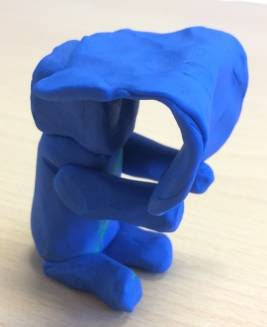European higher education students: contested constructions
It is often strongly implied in the academic literature that students across the world are becoming more similar as a result of the restructuring of higher education (HE) systems along market lines and the shift away from distinctive national university models towards a pervasive Anglo-American norm. Within Europe, some scholars have suggested that the Bologna Process has exacerbated such trends – bringing about the convergence of HE systems and positioning students as consumers.
Nevertheless, it is rare that such assertions are explored empirically and/or in a cross-national manner. Our research was intended to start to address this gap and focused on examining dominant understandings of higher education students within and across six European nations (Denmark, England, Germany, Ireland, Poland and Spain).
One part of this project involved asking students – in the six nations – to make plasticine models of how they understood themselves, as students, and then explain their model to others (in a focus group).
In line with the studies mentioned above, there were some important commonalities across all six countries. The most frequent way in which the students represented themselves was as learners, emphasising the importance of learning to their identity as students, and the centrality of knowledge acquisition to their time at university. An example of this is the book (Figure 1) produced by one of the participants in an English focus group. In explaining their model, they said: ‘I’ve been really surprised by how much I feel like my subject has come to like define me and how much genuinely of what I talk about is about my subject and things that I’ve discovered that I’m really interested in, and to be proud of that’.
Figure 1. Book

Students in all countries also positioned themselves as hard workers – suggesting strongly that they did not see a degree as a consumer product to be bought, but rather something that required significant effort and commitment on their part. An example of this is the model of a student with a laptop attached to their head (see Figure 2) produced by one of the focus group participants in Ireland.
Figure 2. Student with laptop attached to head

While such understandings can be seen as in line with arguments about cross-European convergence, they nevertheless raise important questions about whether, as some scholars have contended, learning has been commodified and students are largely instrumental in their approach to their studies.
The plasticine models also highlighted some interesting differences between countries. One example of this is the way in which students in Poland – but not in any of the other five countries – produced models to represent their similarity with other people, emphasising that there was nothing special about being a student. For example, one Polish participant made the model shown in Figure 3, and explained, ‘I’ve made a regular person because I think that every student is just a regular person and the fact that you are attending university doesn’t make you special in any way’.
Figure 3. A regular person

Such views can perhaps be explained by the fact that, unlike the other countries, Poland’s HE sector has expanded very quickly over the recent past, leading to a widespread view that it is now easy to gain entry to university and ‘anyone’ can become a student. This particular national difference – and others evident in the data – raise questions about the degree of European homogenisation, and suggest that some key national differences endure, at least with respect to how students are understood.
You can hear the full CGHE presentation here and read the article upon which this blog is based here.
